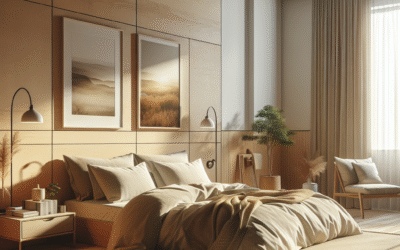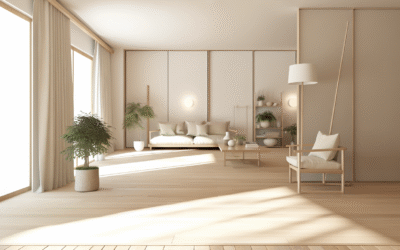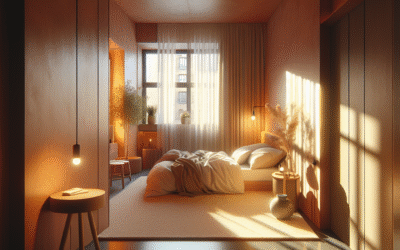
Wall art, you know, it’s not just about filling empty spaces. It’s about injecting personality, sparking conversations, and honestly, making a house feel like a home. Picking the right piece can completely transform a room, setting the mood and reflecting your unique style. So, where do you even begin? Let’s walk through it, shall we?
Understanding Your Space and Style
First things first: what kind of vibe are you going for? Is your place a minimalist haven, a bohemian paradise, or somewhere in between? Understanding your existing decor and personal taste is key. Seriously, it will save you loads of time and potential buyer’s remorse. Think about the colors, textures, and overall aesthetic of your room. What’s already working, and what feels like it’s missing?
- Assess the Room: Consider the size of the wall, the amount of natural light, and the existing color palette.
- Define Your Style: Are you drawn to modern abstract art, vintage posters, or perhaps something more traditional?
- Consider the Function: Is the space meant to be relaxing, energizing, or thought-provoking? This will influence the type of art you choose.
For instance, a calming bedroom might benefit from serene landscape prints or abstract art with soothing colors. A vibrant living room, on the other hand, could handle bolder, more dynamic pieces. And hey, don’t be afraid to mix and match styles – just do it thoughtfully. It’s all about creating a cohesive, yet interesting, look.
Choosing the Right Size and Scale
Size does matter, especially when it comes to wall art. A tiny piece on a massive wall can look a bit lost, while an oversized artwork in a small room might feel overwhelming. So, how do you strike that perfect balance?
As a general rule of thumb, consider the “two-thirds rule.” This means that the artwork should take up about two-thirds of the available wall space. For example, if you have a blank wall above a sofa, measure the width of the sofa and aim for an artwork that’s roughly two-thirds of that width. Easy peasy, right?
Of course, rules are made to be broken. If you’re going for a gallery wall (more on that later), you can play around with different sizes and arrangements to create a visually appealing composition. Just make sure there’s a common thread – like a similar color palette or theme – to tie everything together.
Exploring Different Types of Wall Art
Okay, now for the fun part: exploring the endless possibilities of wall art! From paintings and prints to photographs and sculptures, there’s something out there for everyone. Let’s break down some popular options:
- Paintings: Original paintings can add a touch of sophistication and uniqueness to any space. Whether it’s an oil on canvas or a watercolor masterpiece, a painting can become a focal point and a conversation starter. They can be pricey, but honestly, they’re worth it if you fall in love with a piece.
- Prints: Prints are a more budget-friendly way to enjoy beautiful artwork. You can find high-quality reproductions of famous paintings, limited edition prints by contemporary artists, and even custom prints of your own designs or photographs. Websites like Art.com offer a huge range.
- Photography: From breathtaking landscapes to intimate portraits, photography can evoke a wide range of emotions and memories. Black and white photos can add a touch of timeless elegance, while colorful images can bring energy and vibrancy to a room.
- Posters: Posters are a fun and affordable way to showcase your interests and personality. Movie posters, music posters, travel posters – the options are endless! They’re especially great for adding a pop of color and character to a teen’s bedroom or a home office.
- Wall Sculptures: For a more three-dimensional approach, consider metal art wall decor. These can range from abstract geometric shapes to nature-inspired designs. They add texture, depth, and a touch of modern flair to any space.
- Textiles: Tapestries, macrame hangings, and woven art can bring warmth and texture to a room. They’re perfect for adding a bohemian touch or creating a cozy, inviting atmosphere. Plus, they can help absorb sound, which is a bonus in rooms with hard surfaces.
Don’t be afraid to think outside the box, either. Consider incorporating unexpected materials like reclaimed wood, metal, or even plants into your wall decor. You know, it’s all about expressing your creativity and making your space truly your own.
Color Palette and Framing Considerations
Color is a powerful tool when it comes to wall art. It can tie a room together, create contrast, or even evoke certain emotions. When choosing artwork, consider the existing color palette of your room and how the new piece will complement or contrast it.
For example, if your room features a lot of neutral tones, you might want to add a pop of color with a vibrant abstract painting or a colorful photograph. On the other hand, if your room is already quite colorful, you might want to opt for a more subdued piece that doesn’t compete with the existing decor. Remember, balance is key.
And let’s not forget about framing! A well-chosen frame can enhance the artwork and elevate its presence in the room. Consider the style of the artwork and the overall aesthetic of your space when selecting a frame. A sleek, modern frame might be perfect for a contemporary print, while an ornate, vintage-style frame might suit a more traditional painting. You can find some great framing ideas on sites like Michaels, if you’re into DIY or just want to see what’s out there.
Creating a Gallery Wall: A Step-by-Step Guide
Ah, the gallery wall – a timeless classic that can add personality and visual interest to any space. But let’s be honest, creating a gallery wall can be a bit daunting. Where do you even start? Don’t worry, I’ve got you covered.
- Gather Your Art: Start by collecting a variety of pieces that you love. This could include paintings, prints, photographs, posters, and even decorative objects like mirrors or small sculptures.
- Plan Your Layout: Before you start hammering nails into the wall, lay out your artwork on the floor. Experiment with different arrangements until you find one that you like. Consider the spacing between the pieces and the overall balance of the composition.
- Create a Template: Once you’ve finalized your layout, create paper templates of each piece. This will help you visualize how the gallery wall will look on the wall and make it easier to adjust the spacing and arrangement.
- Hang Your Art: Using your templates as a guide, start hanging your artwork. Use a level to ensure that each piece is straight and evenly spaced. Step back and admire your handiwork!
A few extra tips for creating a killer gallery wall:
- Mix and Match: Don’t be afraid to mix different styles, sizes, and frame colors. The key is to find a common thread – like a similar color palette or theme – to tie everything together.
- Vary the Spacing: Experiment with different spacing between the pieces to create visual interest. Some areas can be more tightly grouped, while others can have more breathing room.
- Consider the Height: Hang your gallery wall at eye level for the most comfortable viewing experience.
Lighting and Placement Tips for Maximum Impact
Okay, you’ve chosen your art, framed it beautifully, and even created a stunning gallery wall. But the journey isn’t over yet! Lighting and placement are crucial for maximizing the impact of your wall art.
Natural light is always your best friend, but if you don’t have much of it, consider adding some artificial lighting to highlight your artwork. Track lighting, spotlights, and picture lights can all be used to create a dramatic effect and draw attention to your favorite pieces. Experiment with different angles and intensities to find the perfect balance.
As for placement, consider the function of the room and the flow of traffic. Avoid hanging artwork in areas where it might be easily bumped or damaged. Also, think about the viewing distance. A large-scale piece might be perfect for a spacious living room, while a smaller, more detailed artwork might be better suited for a hallway or a cozy reading nook.
DIY Wall Art Projects to Personalize Your Space
Feeling crafty? Honestly, creating your own wall art can be a fun and rewarding way to personalize your space and unleash your inner artist. Plus, it’s a great way to save some money! Here are a few DIY wall art ideas to get you inspired:
- Abstract Painting: Grab some canvases, acrylic paints, and brushes, and let your creativity flow! Experiment with different colors, textures, and techniques to create a one-of-a-kind abstract masterpiece.
- String Art: Create a geometric or abstract design using nails, string, and a wooden board. This is a great way to add texture and dimension to your walls.
- Photo Collage: Print out your favorite photos and arrange them into a collage on a large canvas or piece of cardboard. You can use different sizes, shapes, and orientations to create a visually interesting composition.
- Pressed Flower Art: Gather some pressed flowers and leaves and arrange them in a frame to create a delicate and natural piece of art. This is a great way to bring the beauty of the outdoors inside.
And hey, don’t be afraid to get a little messy! Embrace the imperfections and have fun with the process. After all, it’s all about expressing your creativity and making something that you truly love.
Maintaining and Protecting Your Wall Art
So, you’ve invested time and money into your wall art. Now, you want to make sure it lasts for years to come, right? Proper maintenance and protection are key. Here are a few tips to keep your artwork looking its best:
- Dust Regularly: Use a soft, dry cloth to dust your artwork regularly. Avoid using harsh chemicals or abrasive cleaners, as these can damage the surface.
- Protect from Sunlight: Direct sunlight can fade and discolor artwork over time. Hang your artwork away from direct sunlight or use UV-protective glass in your frames.
- Control Humidity: Excessive humidity can also damage artwork. Keep your home’s humidity levels consistent and avoid hanging artwork in damp areas like bathrooms or basements.
- Handle with Care: When moving or rearranging artwork, handle it with care. Use gloves to avoid transferring oils from your hands and wrap the artwork in protective materials like bubble wrap or archival paper.
By following these simple tips, you can ensure that your wall art remains a beautiful and cherished part of your home for many years to come. It’s really just about being mindful, a little cautious, and showing your art some love!
Wall Art on a Budget: Affordable Options and Ideas
Let’s face it: beautiful wall art doesn’t have to break the bank. Honestly, there are plenty of affordable ways to add personality and style to your walls without emptying your wallet. Here are a few budget-friendly options and ideas:
- Thrift Stores and Flea Markets: You can often find unique and interesting artwork at thrift stores and flea markets for a fraction of the price of buying new.
- DIY Projects: As mentioned earlier, DIY wall art projects are a great way to personalize your space and save money.
- Printable Art: There are many websites that offer free or low-cost printable art that you can download and print at home. Sites like Etsy also offer affordable digital downloads.
- Posters and Prints: Posters and prints are a relatively inexpensive way to add color and style to your walls.
- Framed Fabric: You can frame interesting fabrics, like vintage scarves or patterned textiles, to create unique and affordable wall art.
The key is to get creative and think outside the box. With a little imagination and resourcefulness, you can transform your walls without spending a fortune. You know, it’s all about finding those hidden gems and turning them into something special.
FAQ Section
DISCLAIMER
Please note that while we strive to provide accurate and helpful information, the advice given here is for general guidance only. Art selection and placement are highly subjective and depend on individual preferences and circumstances. We recommend consulting with a professional interior designer for personalized recommendations.
Categories
- Accent Walls & Ceilings (61)
- Art Curation & Gallery (62)
- Bedding Style Trends (68)
- Bedroom Makeover (81)
- Bohemian & Eclectic Styles (58)
- DIY & Budget-Friendly Decor (64)
- Eco-Friendly Design (62)
- Furniture Care (71)
- Home Decor & Design Ideas (162)
- Home Wellness Spaces (59)
- Integrated Outdoor Living (67)
- Japandi Style (61)
- Kids and Nursery Decor (59)
- Living Room Decor (79)
- Mix & Match Techniques (73)
- Modern & Contemporary Design (66)
- Rug Sizing & Placement (73)
- Scandinavian Design Inspiration (20)
- Seasonal Home Decor (79)
- Small Space Solutions (73)
- Wall Art & Painting Tips (77)
Recent Comments
Archives
Product Gallery
-
Large Area Green Rugs for Bedroom Nordic Living Room Decoration Shaped Carpet Irregular Plush Lounge Rug Home Thick Washable Mat
Rated 5.00 out of 5$36.00 – $225.00Price range: $36.00 through $225.00 -
Nordic Style Rugs for Bedroom Morandi Living Room Decoration Carpet Large Area Geometry Lounge Rug Home Cloakroom Non-slip Mat
Rated 5.00 out of 5$26.00 – $387.00Price range: $26.00 through $387.00 -
Irregular Shapes Living Room Decoration Carpet Modern Style Rugs for Bedroom Home Thicken Plush Rug Fluffy Soft Lounge Floor Mat
Rated 4.83 out of 5$37.00 – $225.00Price range: $37.00 through $225.00














